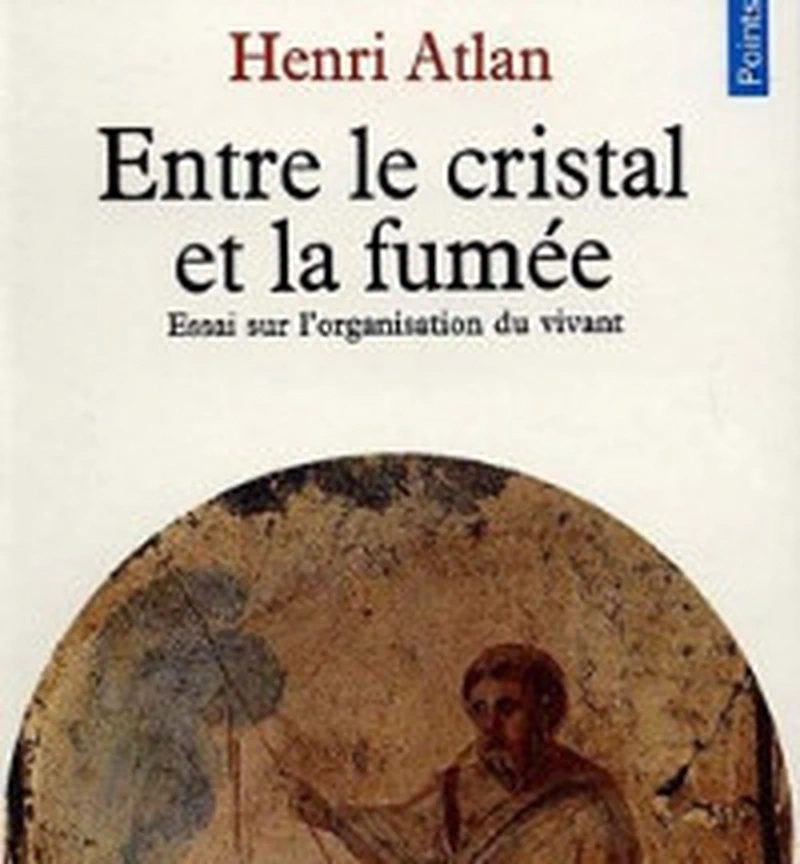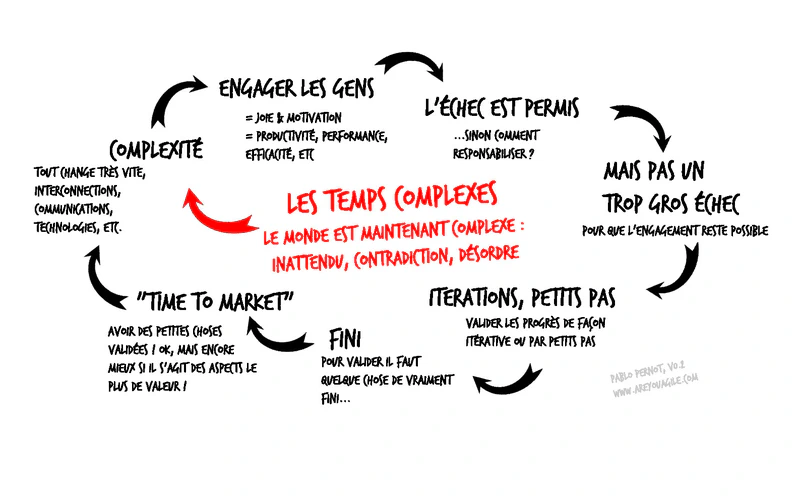Another great read: Between the Crystal and the Smoke by Henri Atlan, this book is packed with information on the self-organization of living systems, on memory, on information transmission, on open and closed systems, on complexity, etc. Dating from the late 70s, it extensively cites Edgar Morin’s paradigm lost: human nature, and the works of Marc Halévy or Dominique Dupagne have drawn directly or indirectly much material from it.

As I return from a weekend in Tunis where I had the pleasure of giving a conference (for the Agile Tour Tunisia 2013 on OAA (Open Agile Adoption) -of which you’ll find the slides here-. Among the strong ideas of OAA, storytelling and self-organization hold a predominant place in my eyes. Henri Atlan’s propositions allow me to reinforce or clarify some of my reflections.
About storytelling, we clearly feel that it’s a form very well adapted to our way of functioning, and as Oana Juncu said in her blog (or during the storytelling battle sessions that we were able to give together, by the way Oana have you released the material?): our brain is wired for stories, culture relies on stories, change relies on stories to consolidate itself.
About self-organization, I would echo the words of Harrison Owen in his recent TEDx on Openspace (Open Space), Dancing with Shiva: human systems like all living systems, are self-organized, and further he asserts: organizing a self-organized system is not only an oxymoron, it’s above all stupid!
Completely steeped in these reflections, it’s while reading this book by Henri Atlan that a key is given to me (notably in the chapter consciousness and will in self-organizing open systems). I’ll try to formulate it in my own words.
Memorial patterns, storytelling
Learning is the integration of patterns. The more we learn, the more patterns we integrate to differentiate situations. Noise and disorder exist, and therefore many patterns resemble each other but are different. We then create more and more patterns to respond to our growing learning. Thus disorder generates order (more and more patterns) but in an increasingly complex set. This is what actually constitutes what we are, our stories, hence storytelling, it’s our past, our memorial patterns. It’s our voluntary consciousness Henri Atlan also tells us, but it concerns the past first.
Self-organization
Self-organization is a natural phenomenon of all living systems, from which we don’t escape. What Henri Atlan specifies is that self-organization is introduced by disorder, to which we must respond, as seen above to generate patterns (order). Self-organization is this phase of undirected learning (by a teacher for example) which aims to generate patterns. This self-organization reveals according to Henri Atlan our unconscious will (and thus the future, toward which we tend), since we try to create organization starting from chaos according to our desires.
Lessons
Several lessons in my eyes:
- it’s indeed disorder that generates value because it is the material for new patterns, for new learning.
- Self-organization is this faculty of living systems to transform this noise, this disorder into patterns, into story, chaos into order. But in doing this, learning increases, as does complexity: the interweaving of memorized patterns.
- Story can be considered as an ideal memorized pattern.
- Self-organization and storytelling are therefore intrinsically linked. There is a strong feedback relationship from one to the other.
Organizational illness
Henri Atlan then explains certain psychological disorders, the delirium evoked by Edgar Morin in his paradigm lost, by frozen systems, where learning no longer takes place: it’s therefore the same pattern, immutable, that we constantly return to (and which takes the form of delirium in humans). The link to an organizational illness seems obvious to me: think of Kafka, we’re frozen in patterns where learning no longer takes place, which we constantly repeat. Think of organizations whose processes are frozen, which no longer learn new patterns related to the variations that the organization encounters (necessarily). An organization without self-organization is a sick, delirious organization.
Complex times
We also find there -for those who know it- the spiral dynamics, the more our organizations learn, the more our civilizations learn, the more patterns are created, the more complex the world becomes, the more the organization, the more the civilization has complex patterns, the more responses must be based on involvement, cooperation, accountability. What I call complex times.

To summarize, self-organization and storytelling are therefore indispensable, tension toward the future, support from the past.